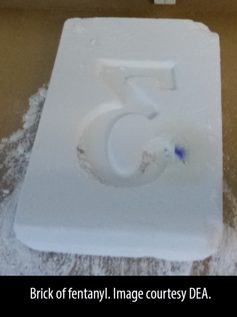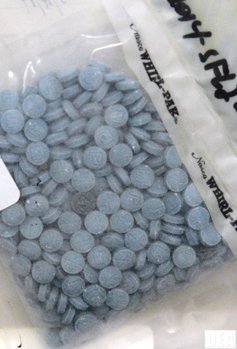The Deadly Fentanyl Family of Drugs
Until a few years ago, few people had ever heard of the prescription drug fentanyl. Perhaps if a relative suffered from terminal cancer or they went through serious surgery, they might have heard of it. Most of the time, fentanyl was delivered in a patch form, where it would be slowly absorbed by the body, or as a long-lasting lollipop that would dissolve too slowly for the drug to be absorbed too rapidly. This seemed to be the only fentanyl on the market, until the last few years when other formulas from the same family have suddenly shown up.
These other formulas have little or nothing to do with pharmaceutical companies you may have heard of. Most of them come from illicit labs in Asia and they are extremely dangerous.

Fentanyl itself is an incredibly strong painkiller—50 to 100 times stronger than morphine, which underlines why it is so deadly. What’s being found on the illicit market now and in other countries is other forms of fentanyl, manufactured by unscrupulous chemical companies in Asia. For example, these variations of the drug:
- Acetyl fentanyl
- Furanyl fentanyl
- Methylfentanyl
- Butyrfentanyl
- Benzylfentanyl
- Norfentanyl
- Carfentanil
The difference between these formulas may be just a few molecules twisted to one side. Chemical companies create these different formulas so they can circumvent import laws of the countries they want to ship these products to. When it becomes illegal to ship acetyl fentanyl because it is making its way into the illicit drug supply of the country, these companies start manufacturing furanyl fentanyl or another formula so they can still legally sell it. That is, until the laws catch up with this new formula. It’s a game of cat and mouse.
Carfentanil, however, has long been available in the U.S., brand-named Wildnil. It is a large animal sedative. If a rhinoceros or elephant needs medical treatment, Wildnil has been the tranquilizer drug of choice. It is a mind-boggling 10,000 to 100,000 times stronger than morphine. Now, even carfentanil is showing up in illicit drug supplies in the U.S., also originating from unscrupulous and criminal chemical labs.
What Happens When Drugs from this Family Arrive in the U.S.?
Once the drugs are in the country, drug dealers disguise them before they are sold to those trapped in a seemingly endless cycle of obtaining and using these deadly substances. They may hit the market in the form of counterfeit prescription drugs. The photograph below from the Drug Enforcement Administration shows a bag of fentanyl masquerading as painkillers.

They may be mixed into heroin. If the drug dealer doing the combining is not extremely careful to mix the powders evenly, then “hot spots” can occur and the unlucky person who buys a bag of heroin from that spot may overdose. In this image, you can see how easy it would be to overdose—the fatal dosage of fentanyl is almost impossibly tiny.
In the Ohio area, already hard-hit by an epidemic of heroin use and overdoses, carfentanil in the drug supply began overwhelming first responders in August 2016. In just six days, there were 174 overdoses. Most of these people were saved with the opioid antidote naloxone. But while just one dose will usually bring around a person who overdoses on heroin, four or more doses may be required to save a person who overdoses on carfentanil.
With these stronger drugs, any law enforcement officers on the scene must dress for handling hazardous materials, with full suits, gloves and respirators, as the airborne powders can also be deadly.
How to Escape this Danger
It has never been more dangerous to be addicted to this type of drug. It’s quite possible that the future will become even more dangerous than the past. A person addicted to opioids is not able to stop himself from buying and using these drugs, even when he knows the risk. If you care about someone who is using opioids or any drugs, the best time to help him or her find an effective rehab program is right now.


 ®
®